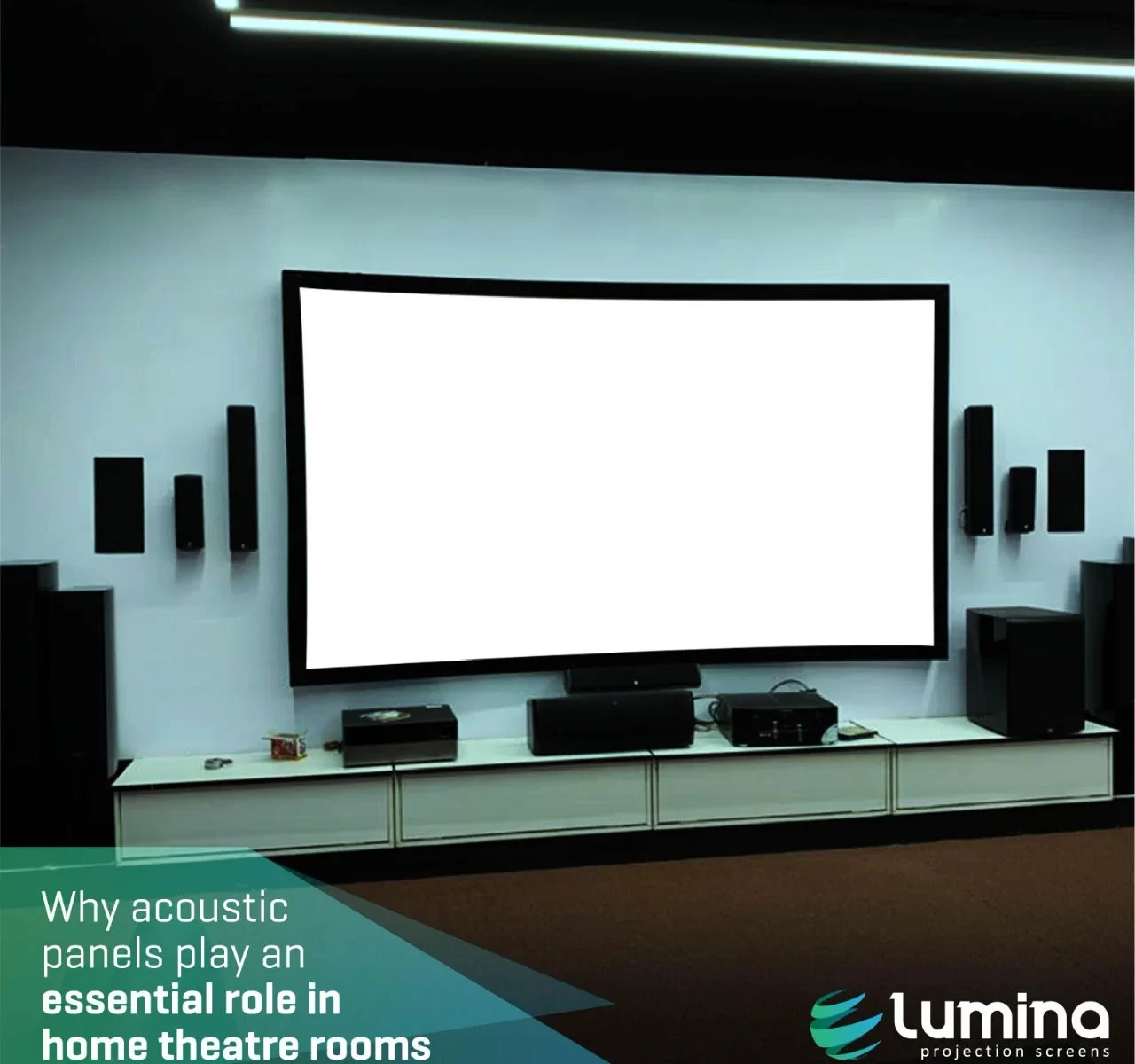
Why acoustic panels play an essential role in home theatre rooms
To achieve overall success in creating a great home theatre or media room, you must first understand the most important elements of a quality home theatre that is keeping in mind the home theatre acoustics.
While the majority of people prioritize things like the size of a projection screen, projection system, surround sound system, home theatre seatings, theatre room aesthetics, and other home theatre paraphernalia.
These elements too play an important part but, most people also neglect the key requirements that completely change the dynamics and bring a big difference in achieving the ultimate sound in the room. That is the acoustic panels.
Also while creating a home theatre room, many people give more importance to the speakers. Yes, a great surround sound system is a major aspect, but too much sound can also end up in giving you a terrible experience.
As home theatres are cozy compared to cinema theatres, sound waves keep bouncing around the four walls hence creating an echo and reverberation that leads to unclear and loss of sound. That’s when acoustic panels come into play. Let’s look at why acoustic panels are important in the home theatre rooms.
Importance of reverberation time in terms of acoustic panels
There must be a clear understanding of reverberation time when it comes to the usage of acoustic panels for home theatres. It means how long it takes for the sound to fade out in any given space.
If the sound lingers in the room for a long period of time, the more it will create an echo effect in that room. Sound repeatedly bounces off the hard surface walls in the room.
If there is no matter that can take in the sound, then the sound will keep bouncing around the four walls of the room until it decays. Hence, the sound takes a long time to vanish. This shows that the room has a high reverberation time. (echoes)
So, it is important to use acoustic treatments to consume sound waves. The Acoustic Panels extend the decay rate of the sound waves that result in a lower reverberation time for the room.
Decaying of the sound at a quick rate reduces the echo effect in the room and enhances the accuracy of the dialogues and sound in the room.
Importance of NRC (Noise Reduction Coefficient) in acoustic panels
Acoustic panels come with an NRC (Noise Reduction Coefficient) rating. It measures how much of the sound it can absorb. The rating of NRC is similar to the amount of sound that the panel will take in. Suppose an NRC rating of .80 which means it takes in 80% of the sound and reflects the remaining 20% back into the theatre room.
Acoustic panels not only absorb the sound and decay of the reverberation; they also diffuse the sound so it forms a comfortable listening experience.
Dead space is formed when the panels soak in too much sound. There is no echo and reverberation, which can be quite uncomfortable while enjoying a film.
Diffusion helps in reflecting some of the sounds into the room so it sounds without tempering and producing a muffled noise. This helps to create a more immersive, “surround sound” experience in a cozy home theatre room.
Importance of Acoustic panel placement in home theatre
The acoustic panel placement and positioning can have a huge impact on the sound absorption quality. Setting them in places where sound does not naturally reflect will essentially render the panels useless. You need to search reflection points for perfect placement planning.
Let’s looking some of the main acoustic panel placements in a home theatre room:
Side Wall
The most significant placement for acoustic panels in your theatre room is on the front portion of the side wall known as the first reflection point. It represents the proper location on the side walls where the front speakers’ sound waves will hit the wall. An acoustic panel on the first reflection point can go a long way and help to control the reverberation in the room.
Front Wall
A perfect recommendation would be panels on the front wall bracketing the projection screen. These front panels will absorb the unnecessary sound waves that might bounce off the rear wall. If you have an acoustically transparent screen, you can also place panels behind the screen.
Rear Walls
Many experts recommend Diffusion for the rear portion of the theatre room. Doing this keeps the room sounding livelier and clear. If you got a series of smaller panels, then try using absorptive panels on the back wall too.
Ceilings
It is not quite important to place panels on the ceiling if you have a carpeted room because the energy of sound released from the centre channel does not bounce from the floor to the ceiling and back at the floor.
Conclusion
Acousticians say that one should have at least 40% of their wall space with acoustic panels in their home theatre or media room. The acoustic panels in home theatres can make a huge difference in the sound quality and complete viewing experience. Thereby, they should be an essential part of your theatre room design plan.
We at Lumina can help you create an ideal home theatre experience. We offer a wide range of premium projection screens and other accessories to create a room that you and your loved ones will enjoy for years to come.
To get in touch with our team and choose the products that you need to design a premium and satisfactory home theatre room, visit: https://luminascreens.com/ or simply reach us via our social media platforms like Facebook, Instagram, and LinkedIn.
- Date - October 12, 2020